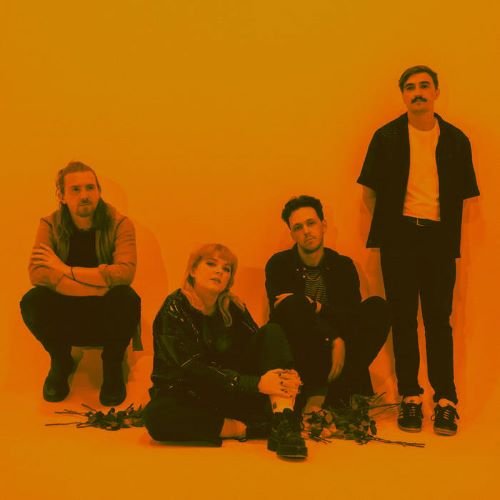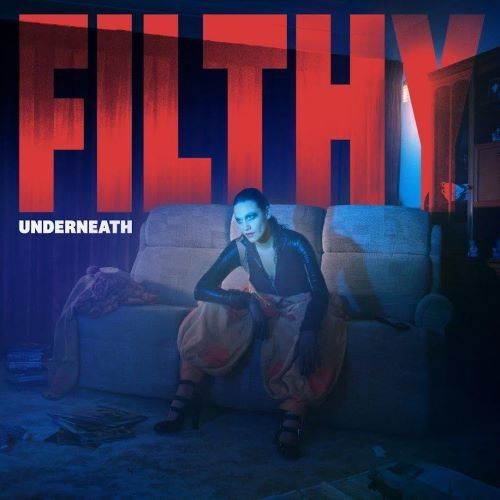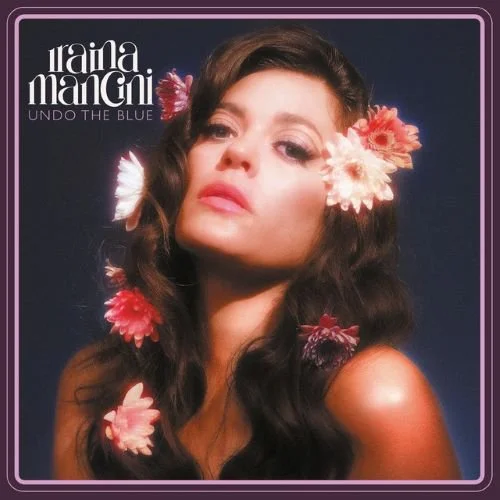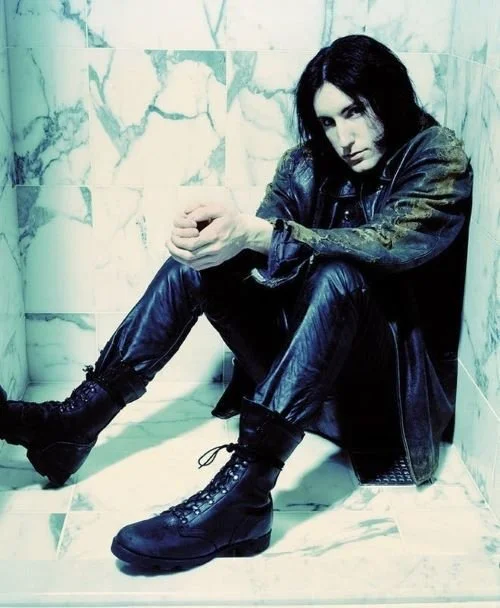FEATURE:
Cue Fanfare
Prefab Sprout’s Swoon at Forty
_________
THE debut album….
from a truly legendary band, Prefab Sprout’s Swoon was released on 12th March, 1984. Led by the phenomenal songwriting of Paddy McAloon, I want to go into more depth. I am going to come to some reviews and insight into a magnificent debut album. Released through Kitchenware and produced by Prefab Sprout and David Brewis, this is an album that everyone should know about. Paddy McAloon sways Swoon is among his favourite albums, though he feels he could have been more concise when it comes to the songwriting. Not completely happy with the vocals. It is modesty and self-criticism from a masterful songwriter. Together Martin McAloon and Wendy Smith, Swoon was unlike anything else that came out in 1984. Ahead of its fortieth anniversary, it is worth learning more about the magnificent Swoon. I will start with Wikipedia’s background details. It is remarkable discovering how Prefab Sprout formed and the way Swoon came together:
“Prefab Sprout, formed by brothers Paddy and Martin McAloon, first played live in 1979, having been joined by drummer Michael Salmon. Songs that would appear on Swoon such as "Ghost Town Blues", "Here on the Eerie" and "Technique" were already part of their set by April 1980. The band recorded their first single "Lions in My Own Garden (Exit Someone)" on 25 February 1982, and self-released it on their own Candle Records. Their lineup expanded shortly after to incorporate vocalist Wendy Smith, and they recorded a second single "The Devil Has All the Best Tunes" that September. In a 1981 interview McAloon expressed a dislike of well-regarded songwriters such as Paul Weller, Nick Lowe and Elvis Costello, the last of whom he said he disliked intensely, and he attributed the band's lack of success up to that point to laziness. Prefab Sprout were signed by Keith Armstrong's Kitchenware Records in March 1983, after Armstrong heard their music played in the Newcastle branch of HMV he managed. Kitchenware issued "The Devil Has All The Best Tunes / Walk On" and additionally reissued the first single. These releases attracted notice including laudation from Elvis Costello.
After the departure of Michael Salmon, the band recorded their debut album in a 24-track studio in Edinburgh on a budget of £5,000. It features session drummer Graham Lant and was produced by fellow Kitchenware artist David Brewis of The Kane Gang. The songs were written over a 7-year period, and the album was titled Swoon, standing for 'Songs Written out of Necessity'. McAloon mostly avoided the material the band had been playing live for the preceding years, instead favouring more recent complex material he felt would "only work on tape".
The basic tracks were recorded in just one day, and put the band under intense pressure. During a session, McAloon made a crying Wendy Smith sing two words over and over for three hours. McAloon wrote piano parts for the songs despite being unable to play the instrument, and recorded the parts with the aid of drop-ins. A synthesiser was used on several tracks, chosen for its sparse and refined sound. Swoon was completed in August 1983, and the band was then signed to CBS for distribution Graham Lant's relationship with Prefab Sprout ended soon after recording due to his disappointment at being given a flat fee for his work rather than a percentage of album sales. In the months leading to the album's release in March 1984, the band performed live with a succession of short-term drummers. In December 1983, they opened for Elvis Costello at several concerts. Costello's championing led to Prefab Sprout being tagged as "Costello's little band!”
I will move to an article where Martin McAloon recalled working on Swoon. Published in 2019, he looked back on the remarkable Swoon. If the band would arguably go on to record more powerful and enduring albums, it is clear that Swoon is very special. The sprouts (pardon the pun!) of something beautiful starting to come through. I would recommend that everyone buys Swoon and adds it to their collection:
“I’m not one for reminiscing. So when the wonderful people at Sony Legacy asked me for a few anecdotes about Swoon, just a couple of facts about the recording of an album that took place thirty-six years ago, I fretted. We don’t do facts: there are no facts and I’ve not actually listened to any of our albums since the year 2000.
However, when the arrival of the re-mastered test pressing of Swoon coincided with a road trip I was planning to Berwick for the JMW Turner exhibition at The Maltings, my alter-ego Feliks Culpa and I thought it the perfect opportunity to reacquaint our older and younger selves and perhaps, in the spirit of looking forward rather than backwards, describe how it feels to time travel.
I strap myself in, and we’re out of the blocks on the “B of the Bang”: drums and guitar, my bass run, the harmonica, just as I’d left it – Don’t Sing – flooding back. The memories are a tsunami, a thick muffled constant of debris churning towards me, and then the vocal: “Don’t Sing”. He’s not singing. Why is my brother shouting? He’s commanding me from atop a lamppost, he’s lashed himself to a tree to avoid the deluge, he’s warning that it’s not going to stop for another forty-five minutes, and as with the Sirens, I’ve got to listen!
Fragments form in the swirl, reconstituted facts, the drums; Graham Lant, brother of Venom’s Cronos, available for one day. Eleven backing tracks, five first takes, the songs Cherry Tree and Diana languish unfinished in Ampex limbo. Rehearsing at extreme altitude in exhausting temperatures above Wadds the glass fitters, 62 Clayton Street, Graham in boxer shorts to keep his Top Shop suit crease free. What do all these facts mean?
Cue Fanfare: “I can only play this once,” Graham warns. That’s all he needed. Wendy’s supersonic vocals taxiing on the runway, “Some expressions take me back”, I cut to my fourth birthday, “hair of gold and sweet Mary”. I’m somewhere else. I’m in a version of Michael Apted’s 7Up. Paddy’s singing The Green, Green Grass of Home into Anne Salmon’s tape recorder, I’m reciting “Dolly had the measle, dolly had the flu…” Bass harmonics cut me back to the present: Morpeth to my left and the carriageway narrowing, I squeeze the chevrons and avoid the speed camera. I’m loving it!
I need to concentrate – Green Isaac 1 – the memory provokes a premonition of Green Isaac 2, the end of the album, the culmination of the journey. I’m ahead of myself, I’m Tom Cruise, a “pre-cog” in Stealers Wheel. Is there a time before or between Green Isaac 1 and 2, a time before playing live, when the song could exist without pandering to the muddy fields of festival expectations? Stevie Smith at Glastonbury, “Not drowning, but waving to Guy Garvey”.
I’ve Just realised I’m typing this while listening to Jessye Norman singing Ravel’s Sheherazade with Pierre Boulez conducting from 1984, the same year as Swoon’s release. We met Boulez a year later and gave him a copy of Steve McQueen. That’s a fact and almost an anecdote but it’s from the future. Am I a “Looper” sent to cancel myself out?
Cut to the here and now, a full throttle Here on the Eerie, Paddy’s Hagstrom guitar solo.
The closest we came with Swoon to playing on the “T of the Beat” was Cruel, recorded sans drums or click, brushed snare and hi-hat being added after the event, hence the less than quantised groove. Paddy’s vocal, head cold intact, squeezed onto the last available track. My contribution to urban blues? An upright bass and the Ebony Concerto.
Muff Winwood at Sony (neé CBS) signed us after hearing only five songs from Swoon; “By the time I get to Felton, he’d have signed us”.
Couldn’t Bear to be Special streams above the engine noise. Was this the order, is this how side two starts? Is Basketball next? (Memo, check label copy). Just like I pictured it, Wendy’s voice, the shiver of the fur, Dave Brewis’s Hawaiian lap steel guitar, the “go to” instrument for crashes, bangs, wallops, glissando, skyscrapers and everything.
I Never Play Basketball Now: the chords, the endless chords, 164 and counting. Why? Igor Stravinsky made us to do it! I can still play them all, and in the correct order! John Sunter’s bounced ball, no click track, no count in, no editing, pure luck.
Ghost Town Blues. I may amble past Amble, but I still rush the bassline!
Elegance, I play it once, twice, three times a sublime melody, a lacerating lyric. Technique the same again, the way we were, the sound of wild abandon, of being young, fearless and fretless. We can’t go back, but it all still resonates!
Clowns to the left of me, Holy Island to my right, we were out there, among the waves, cut off from the mainland but somehow still immersed in pop culture. Saintly hermits intoxicated on home brewed mead, Prefab Stout, Lindisfarne. (Now they were a great band)
I’m almost there, the end of the journey, the final track, Green Isaac 2, the glockenspiel, Wendy’s chromatic “Suggest…”. I hear the music of Nino Rota drifting up the stairs. I cut back to the intro of Green Isaac 1, (back to Morpeth 20 minutes ago), then back again to Green Isaac 2 1983. The Godfather 1 and 2 are showing on TV in sequence for the first time, or are they out of sequence, perhaps in chronological order? Is this the order of time, do we shape time? I’ve been here before! “Suggest…” Is there a prequal, a missing section, before Green Isaac 2, ”Suggest…”? Between the intro and the outro, before The Godfather 3?
I’m falling through floorboards, between fact and fiction.
The facts are: we recorded Swoon, Sony / Kitchenware released it and an audience heard it. From there on in, it’s up to the listener to create the facts, add their own memories – “the song that was playing, will help you recall, the feeling of falling, the thrill of it all”.
Just when I thought I was out, they pull me back in”.
It is worth getting to some reviews. In 2014, this review from movingtheriver.com explored the wonderous and hugely original Swoon. It introduced Prefab Sprout to a legion of people. Many unaware of who they were and how they would progress as a band. Forty years later and Swoon still sounds utterly compelling:
“Perhaps like a lot of Prefab fans, I came to Swoon some time after I’d bought and fallen in love with the later albums Steve McQueen, Protest Songs, From Langley Park to Memphis and Jordan The Comeback.
The dry, Thomas Dolby-less production came as a bit of a shock at the time but Swoon stands up pretty well today.
Though some critics have compared the album to Steely Dan, my contemporary reference points would be Lloyd Cole, The Smiths, Aztec Camera and Songs To Remember-era Scritti, though it’s basically impossible to locate Prefab’s influences.
It’s tempting to say that Swoon sounds like the epitome of an ‘indie’ record, 1980s style, with its stripped-back production values and jagged edges. Prefab singer/songwriter Paddy McAloon recently told The Guardian that he thinks of it as more akin to Captain Beefheart, nicknaming the album ‘Sprout Mask Replica’!
Swoon definitely still sounds very much like a debut album; it’s perky, eager to please, naive, studenty, slightly pretentious. McAloon’s vocals occasionally resemble the ramblings of a slightly squiffy, randy teenager. But the album’s adolescent in a really good way with its literary flights of fancy, indulgent ruminations on romantic love and lots of audacious melodic flourishes.
paddy prefabIt sounds almost like rock, with solid 4/4 drums, always-inventive bass from Paddy’s brother Martin and ‘girlie’ backing vocals from Wendy Smith, and yet it resolutely refuses to ‘rock out’ with not a single power chord or jangly electric guitar in the mix.
Instead, the intrepid layering of synths and acoustic guitars (utilised to far greater effect on Steve McQueen and Jordan) probes the songs’ pressure points. And Smith’s pristine vocals give the music an enigmatic, otherworldly flavour.
Lyrically, Swoon reminds me of Joyce’s ‘Ulysses’; a survey of a young man’s hopes, dreams and romantic/professional disappointments. From a songwriting perspective, the words presumably came before the music, resembling stream-of-consciousness prose rather than traditional verse/chorus songcraft.
Novelist/essayist Dave Eggers wrote a great piece about how much he was influenced by this golden generation of literate British songwriters.
As befitting a band from the North East, work (and the lack of it) is a recurring theme, particularly on ‘I Never Play Basketball Now’ and the extraordinary ‘Technique’. ‘Couldn’t Bear To Be Special’ is a classic Prefab ballad (though surely never the right choice for second single) and seems to offer a truly original take on the doomed love affair – the narrator simply doesn’t feel worthy to deserve the attentions of another. Very Nick Hornby-esque.
Future producer Thomas Dolby has talked about the shock of hearing ‘Don’t Sing’ when he was a guest reviewer on the Radio 1 ‘Round Table’ show.
‘Cruel’ is still a delicious piece of pop/bossa nova, more than a decade before the likes of Belle and Sebastian mined similar ground. Some of Paddy’s chords are gorgeous on this. Lyrically it’s original too, an expression of lust and affection from someone who is desperately afraid of offending his ‘enlightened’ paramour. A very modern love song. It was once covered by Elvis Costello”.
The final review I want to get to was published in 2015. I wonder how Martin and Paddy McAloon will mark the fortieth anniversary of Swoon on 12th March. Whether Wendy Smith has any particular memories and special recollections. Many may not have heard Swoon, so it is a perfect opportunity to dive into a spellbinding audio experience:
“The band’s debut, the difficult to track down Swoon gave no clue to how the band’s lead singer and primary songwriter Paddy McAloon would evolve into the Thomas Dolby collaborator and maker of slick alternative pop. No dreamy Wendy Smith singing in the background here – or at least not as much.
Swoon might be the band’s least accessible album. It’s sound teeters somewhere between the quirky but dry jazz/funk of Steely Dan, China Crisis or Aztec Camera. It’s challenging structures are sometimes crammed with what sounds like multiple arrangements in one song. “Here on the Erie” and the amusing “I Never Play Basketball Now” are as much infused with catchy rhythms as they are they are overlapping lyrical references. All clever stuff from the mind of a young under employed genius.
McAloon in many ways was like Green Gartside during the earliest period of Scritti Politti. While Gartside mixed forms of post punk with academia, McAloon does something similar. There’s so much going on lyrically and musically, that you might easily miss some of it with cheap iPhone headphones.
This is exactly the kind of album that I tend to gravitate back to over the years. While Steve McQueen (Two Wheels Good in the States) or Jordan: The Comeback might be easier to enjoy right away, the sublime notes of Swoon can an acquired taste that gets better with time.
In sounding so unconventional for 1984, it has aged well over the years. The album’s rough edges are fitting with the musical legacy of Northern Soul with its subtle black American musical influences. “Crule Fanfare” for instance mixes these musical legacies to create a back-beat with some swing to it. It’s far from traditional R&B, but then again much of Swoon is far from most new wave and pop music released in 1984.
The mix of mid tempo and ballads at times hints to a future of Thomas Dolby produced polish that would come later. “Elegance” and “Cruel” prove that McAloon and Dolby were equals when it came to the vision of the band’s sound in subsequent albums.
If you are already a Prefab Sprout fan, you’ve likely heard Swoon. For new fans, Swoon offers a peak into the mind of a very young McAloon who was bursting with interesting musical ideals. He of course is still one of the great singer songwriters of his generation, even if many Americans are ignorant of his later work”.
A very happy fortieth anniversary to Swoon. I am not sure whether there is an anniversary release planned or whether any events will take place. The latest Prefab Sprout album, Crimson/Red, was released in 2013. Essentially it was a Paddy McAloon solo album. It would be wonderful to see Paddy McAloon, Wendy Smith, Martin McAloon and drummer Neil Conti reuniting and recording more material. Maybe it will not happen. In the meantime, let us celebrate the magic Swoon. An album that sounds captivating…
FORTY years later.



























































